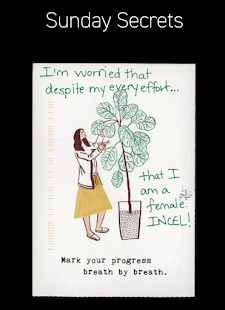Kinetic and Interactive Poetry - Ava Garcia
Digital poetry can be defined as “not a singular form but rather a conglomeration of forms, that now constitutes a genre even though the creative activity itself contains heterogeneous components.” Kinetic and interactive poetry explores the multimedia capacities of the contemporary computer as a poetic environment for both composition and reception. The words and letters of kinetic poetry are not only carriers of meaning but also material objects that have variable properties. Its main distinguishing characteristic is that texts change through animation that portrays meaning. However, not all kinetic poetry is interactive, and not all interactive poetry is kinetic. Digital poetry can be further broken down into a couple of different categories. Concrete poetry is based on an awareness of and interest in the material nature of language, its shapes and forms, and the aesthetic and semantic effects made possible by manipulating language as a material. Visual poetry, or Vispo, has the clearest direct relationship to kinetic poetry made for digital environments and seems to extend and complete the project of the Dada we discussed a few chapters prior. Sound poetry is also a branch of Dada and is the main foundational touchstone for many contemporary sound poets. The evolution of kinetic and interactive poetry is deeply related to the development of the multimedia capacities of the computer. Computer programs such as BASIC, HyperCard, Director, Shockwave, HTML5, JavaScript, and Flash were developed and are common multimedia software programs to develop kinetic and interactive poetry. In conclusion, digital poetry is just another way for readers to see and experience the creative process and expand our imagination before our eyes.
I found Dear E.E. by Lori Janis to be a very captivating and creative work of digital poetry. I love how it incorporated different forms of digital literature that were visual, literal, and incorporated sound effects. When I researched the piece further, Janis wrote this piece to reflect on E.E. Cummings poetry whose free whose free-verse poems are written in all lowercase letters. The piece presumably is addressing cummings in this piece and is accusing him of entering and disrupting her apartment. I really enjoyed the kind of chaotic nature of this piece with the words and letters flying around the screen. I could see how this piece could be a connection or a metaphor for the speaker's internal conflict in their mind. The apartment could represent their mind and how it is constantly disrupted by outsiders. While I wasn’t able to read the entire piece, from what I found online the piece allows you to explore different parts of the author's dreams until you decide to “wake up”. The reader is able to travel and read through different parts of her mind which I found to be a very creative and unique way to create a piece of interactive poetry.


Dear E.E. sounds really interesting. I think it's cool to see how there are so many different forms and styles of digital poetry. The idea of exploring an author's dream until you decide to 'wake up' is really cool!
ReplyDeleteHi Ava! I also thought it was cool how many different branches of kinetic/interactive poetry there are. There are so many cool aspects to this genre and it's hard to encapsulate it all. I liked how you touched on the fact that not all kinetic poetry is interactive, and not all interactive poetry is kinetic. That was definitely a big take away from this chapter, so I'm glad you mentioned it!
ReplyDeleteThat sounds like a really interesting work! The aspect of being able to explore the authors mind is interesting. The chaotic nature of it seems cool since when I think of poetry it is the concrete, on page version instead of words and letters flying around.
ReplyDelete